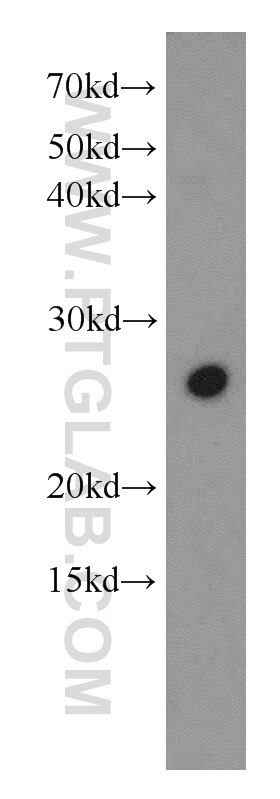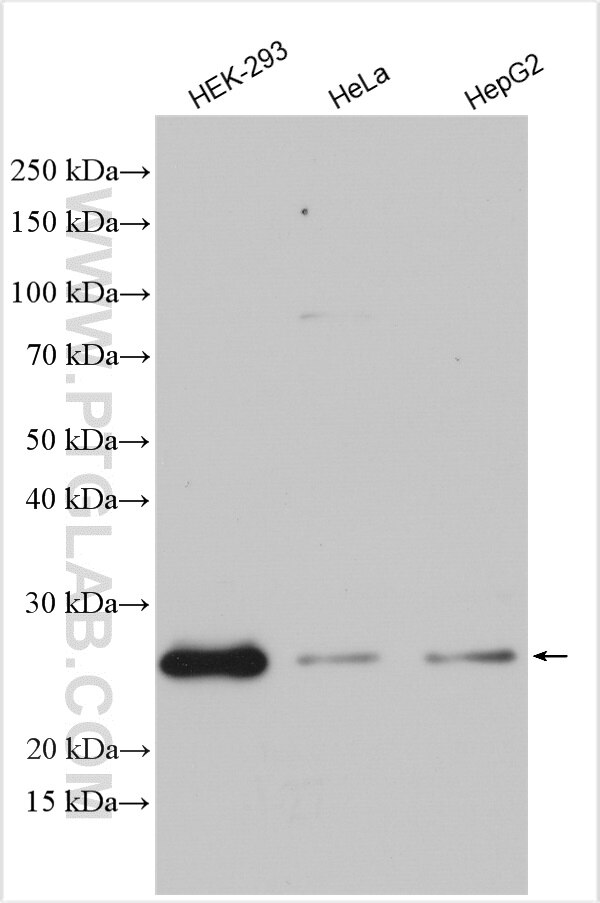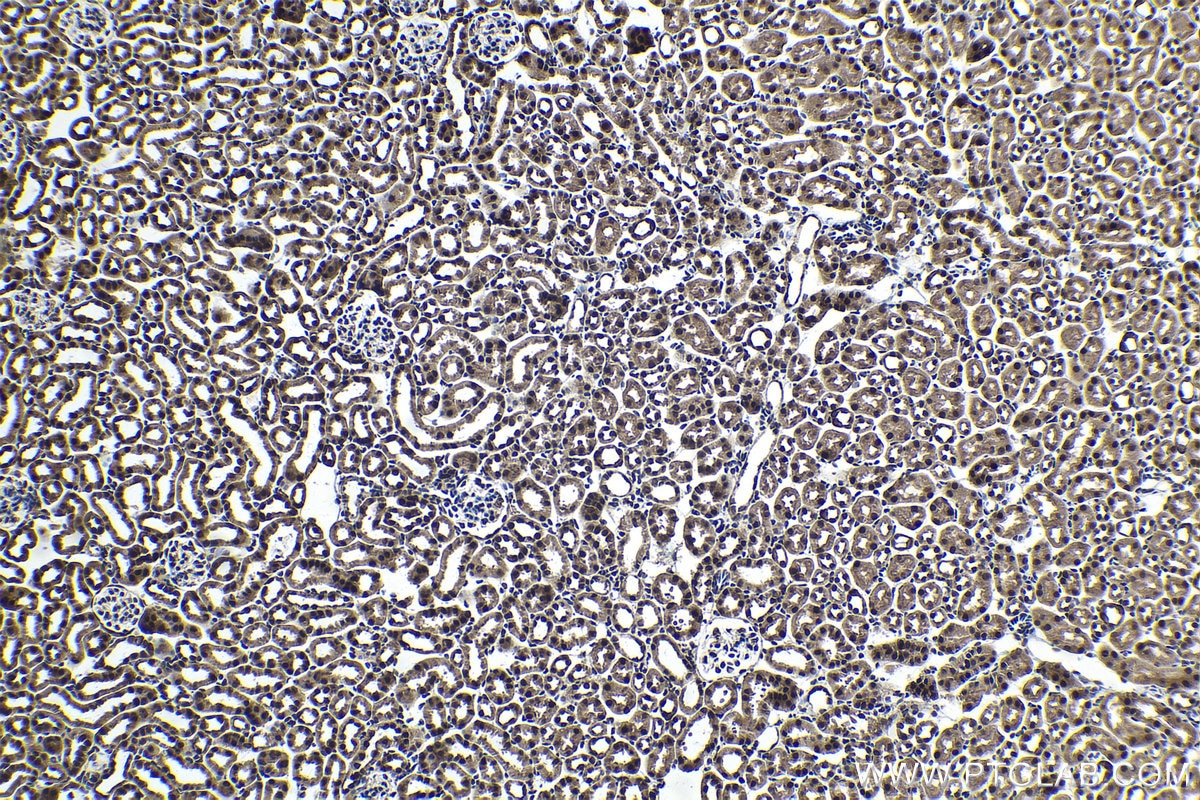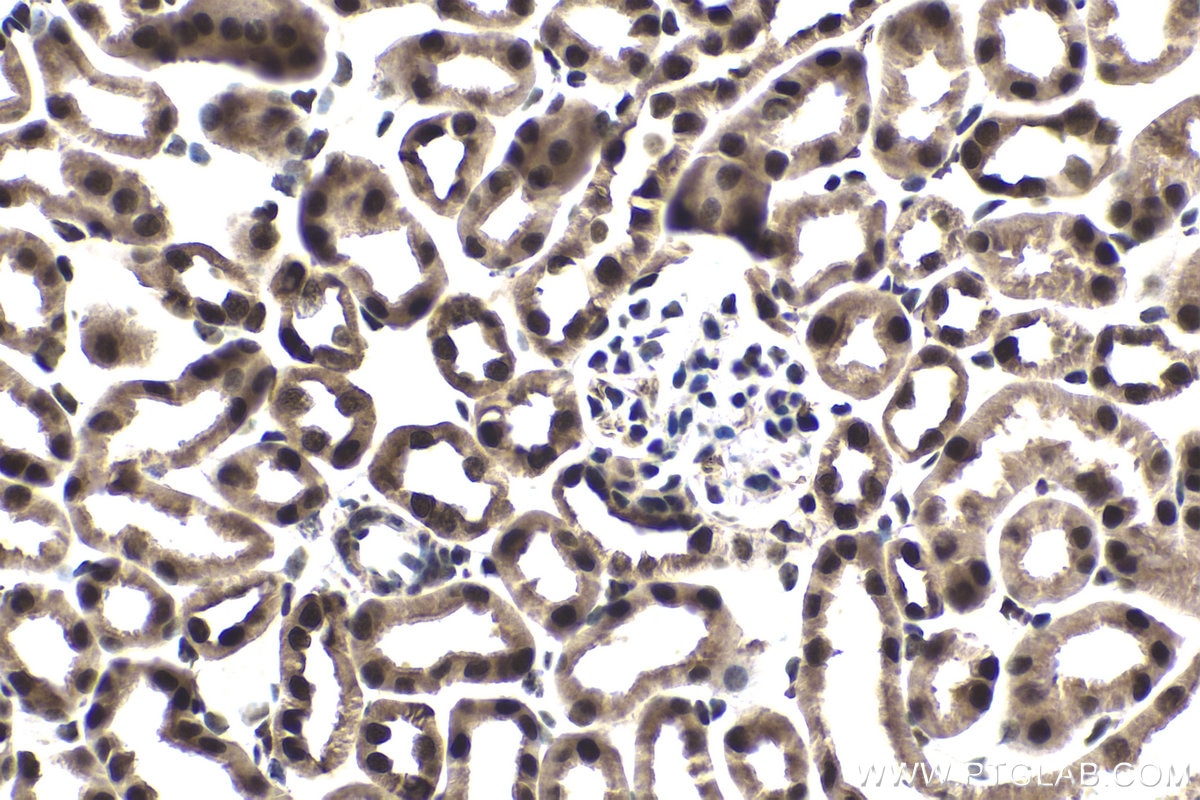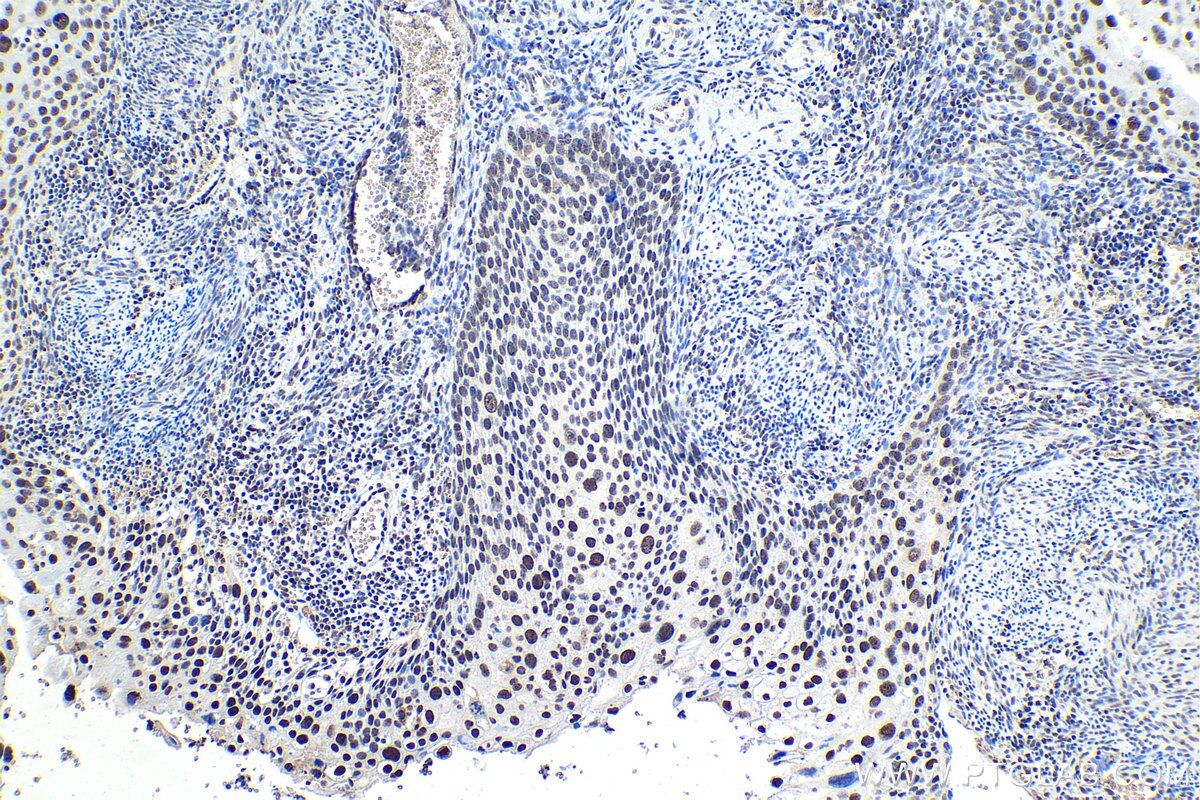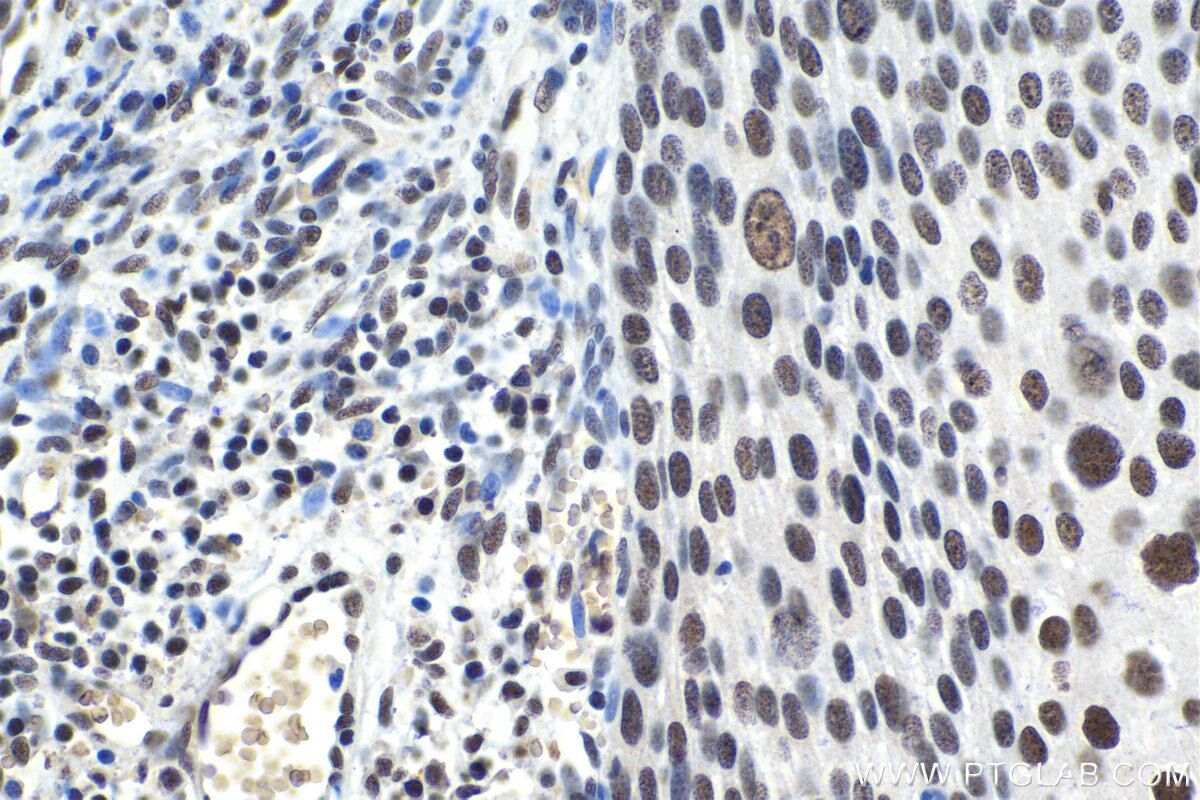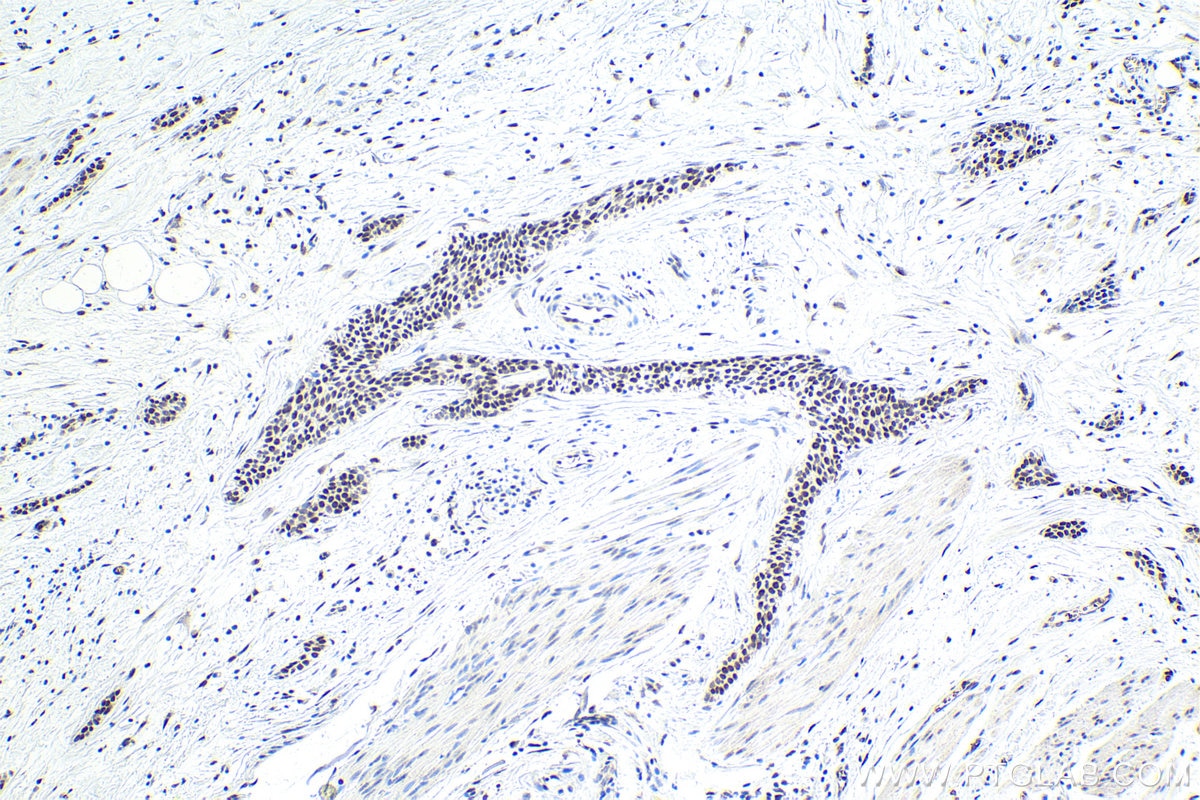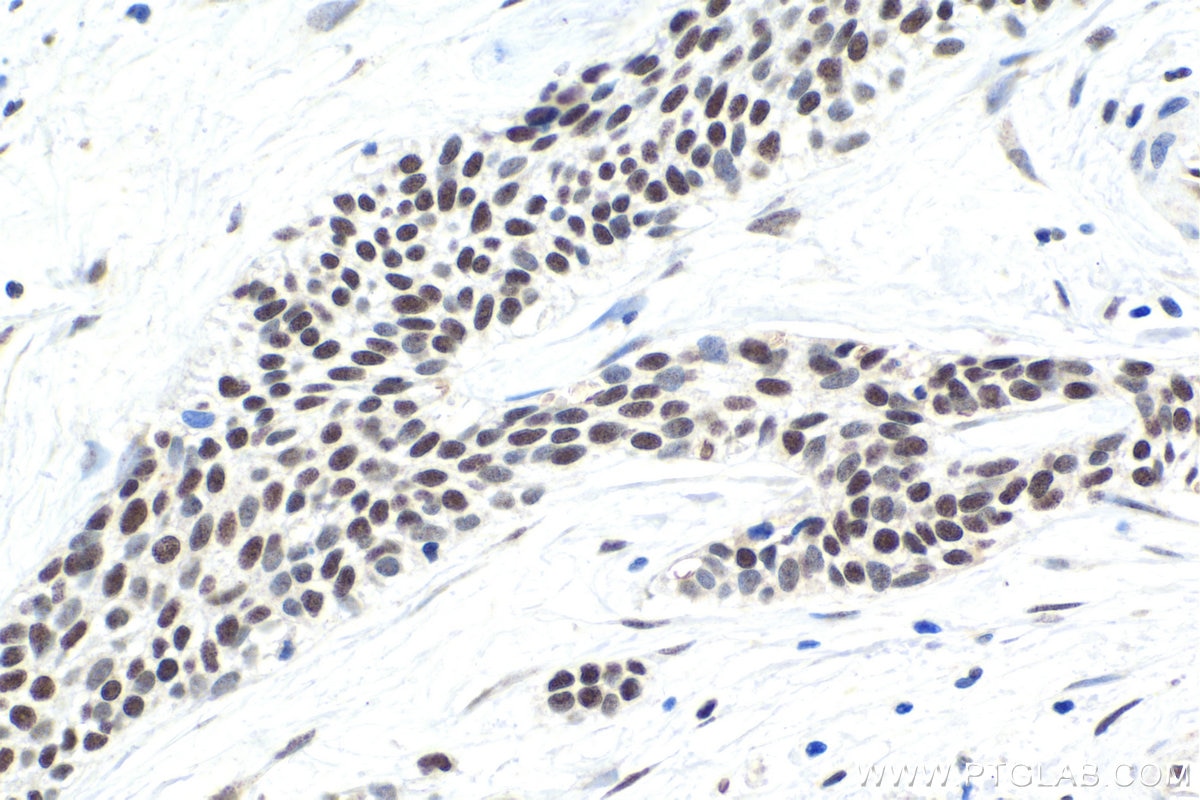- Phare
- Validé par KD/KO
Anticorps Polyclonal de lapin anti-SFRS9
SFRS9 Polyclonal Antibody for WB, IHC, ELISA
Hôte / Isotype
Lapin / IgG
Réactivité testée
Humain, rat, souris
Applications
WB, IHC, IF, ELISA
Conjugaison
Non conjugué
N° de cat : 17926-1-AP
Synonymes
Galerie de données de validation
Applications testées
| Résultats positifs en WB | cellules HEK-293, cellules HeLa, cellules HepG2 |
| Résultats positifs en IHC | tissu rénal de souris, tissu de cancer du col de l'utérus humain, tissu de carcinome urothélial humain il est suggéré de démasquer l'antigène avec un tampon de TE buffer pH 9.0; (*) À défaut, 'le démasquage de l'antigène peut être 'effectué avec un tampon citrate pH 6,0. |
Dilution recommandée
| Application | Dilution |
|---|---|
| Western Blot (WB) | WB : 1:500-1:2000 |
| Immunohistochimie (IHC) | IHC : 1:500-1:2000 |
| It is recommended that this reagent should be titrated in each testing system to obtain optimal results. | |
| Sample-dependent, check data in validation data gallery | |
Applications publiées
| KD/KO | See 3 publications below |
| WB | See 8 publications below |
| IHC | See 1 publications below |
| IF | See 1 publications below |
Informations sur le produit
17926-1-AP cible SFRS9 dans les applications de WB, IHC, IF, ELISA et montre une réactivité avec des échantillons Humain, rat, souris
| Réactivité | Humain, rat, souris |
| Réactivité citée | Humain |
| Hôte / Isotype | Lapin / IgG |
| Clonalité | Polyclonal |
| Type | Anticorps |
| Immunogène | SFRS9 Protéine recombinante Ag12347 |
| Nom complet | splicing factor, arginine/serine-rich 9 |
| Masse moléculaire calculée | 221 aa, 26 kDa |
| Poids moléculaire observé | 26 kDa |
| Numéro d’acquisition GenBank | BC093973 |
| Symbole du gène | SFRS9 |
| Identification du gène (NCBI) | 8683 |
| Conjugaison | Non conjugué |
| Forme | Liquide |
| Méthode de purification | Purification par affinité contre l'antigène |
| Tampon de stockage | PBS with 0.02% sodium azide and 50% glycerol |
| Conditions de stockage | Stocker à -20°C. Stable pendant un an après l'expédition. L'aliquotage n'est pas nécessaire pour le stockage à -20oC Les 20ul contiennent 0,1% de BSA. |
Informations générales
SFRS9 is a member of the serine/arginine (SR) splicing factor family, which contains an N-terminal RNA recognition motif (RRM), a glycine-rich region, an internal region homologous to the RRM, and a long (315-amino-acid) C-terminal domain composed predominantly of alternating serine and arginine residues. SRSF9 has been linked to the occurrence and progression of hepatocellular carcinoma (HCC), colorectal cancer (CRC) and oral squamous cell carcinoma (OSCC). In HCC and CRC, the knockdown of SRSF9 inhibited the proliferation and migration of cancer cells, cell cycle progression and colony formation of cancer cells (PMID: 34336668,35971121).
Protocole
| Product Specific Protocols | |
|---|---|
| WB protocol for SFRS9 antibody 17926-1-AP | Download protocol |
| IHC protocol for SFRS9 antibody 17926-1-AP | Download protocol |
| Standard Protocols | |
|---|---|
| Click here to view our Standard Protocols |
Publications
| Species | Application | Title |
|---|---|---|
Nat Commun Mutually exclusive acetylation and ubiquitylation of the splicing factor SRSF5 control tumor growth. | ||
Nucleic Acids Res Sequence-dependent recruitment of SRSF1 and SRSF7 to intronless lncRNA NKILA promotes nuclear export via the TREX/TAP pathway. | ||
Sci Signal ADAR2-mediated Q/R editing of GluA2 in homeostatic synaptic plasticity
| ||
Hum Mutat Antisense oligonucleotides modulate dopa decarboxylase function in aromatic l-amino acid decarboxylase deficiency. | ||
J Cancer Res Clin Oncol SRSF9 promotes cell proliferation and migration of glioblastoma through enhancing CDK1 expression |
Avis
The reviews below have been submitted by verified Proteintech customers who received an incentive for providing their feedback.
FH Jingwen (Verified Customer) (04-28-2021) | The staining signal showed up inside the nucleus.
|
